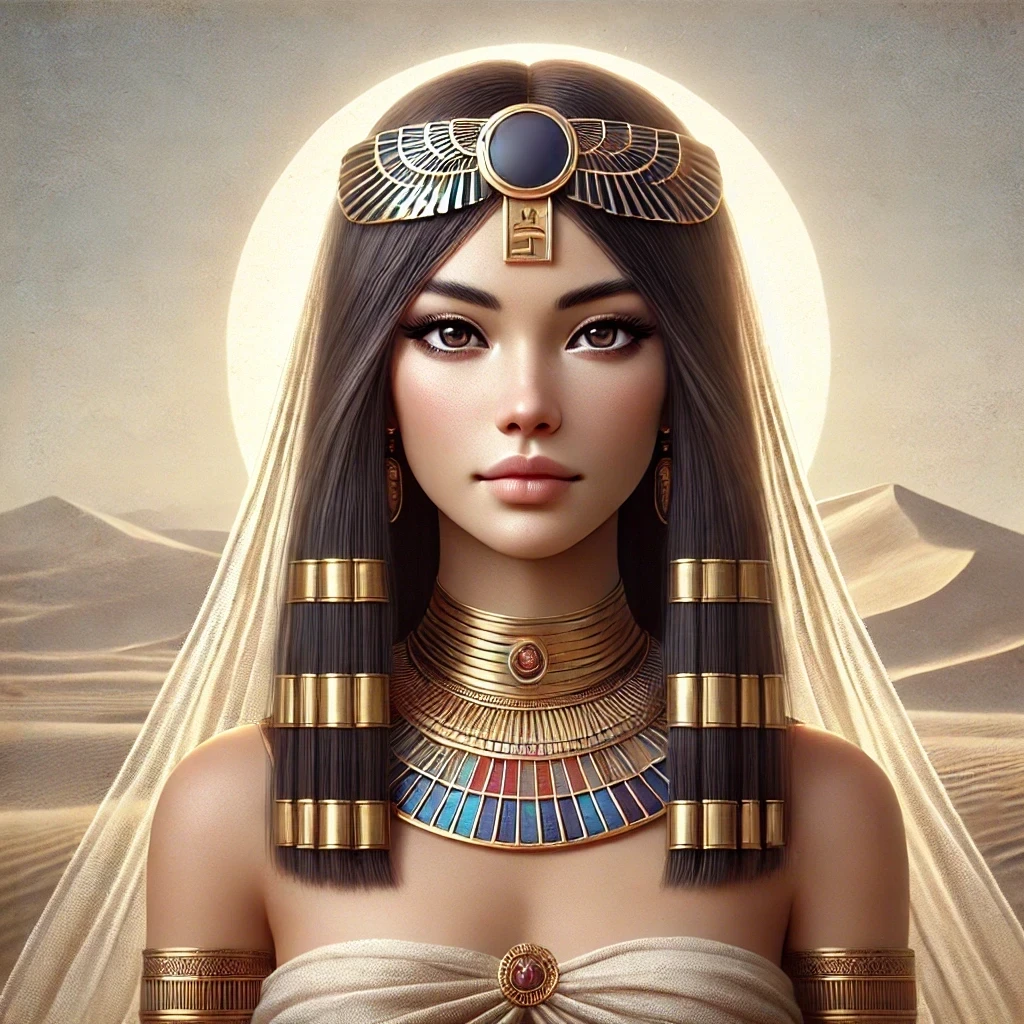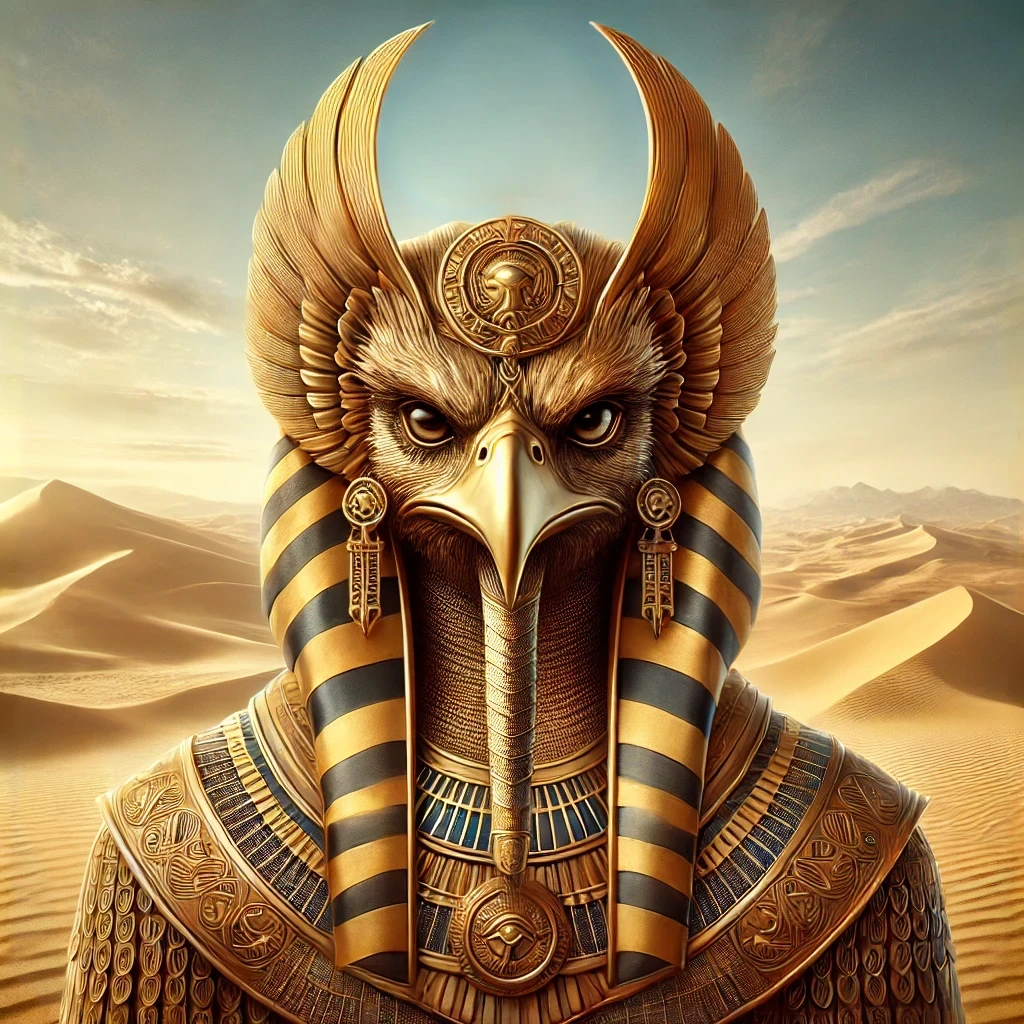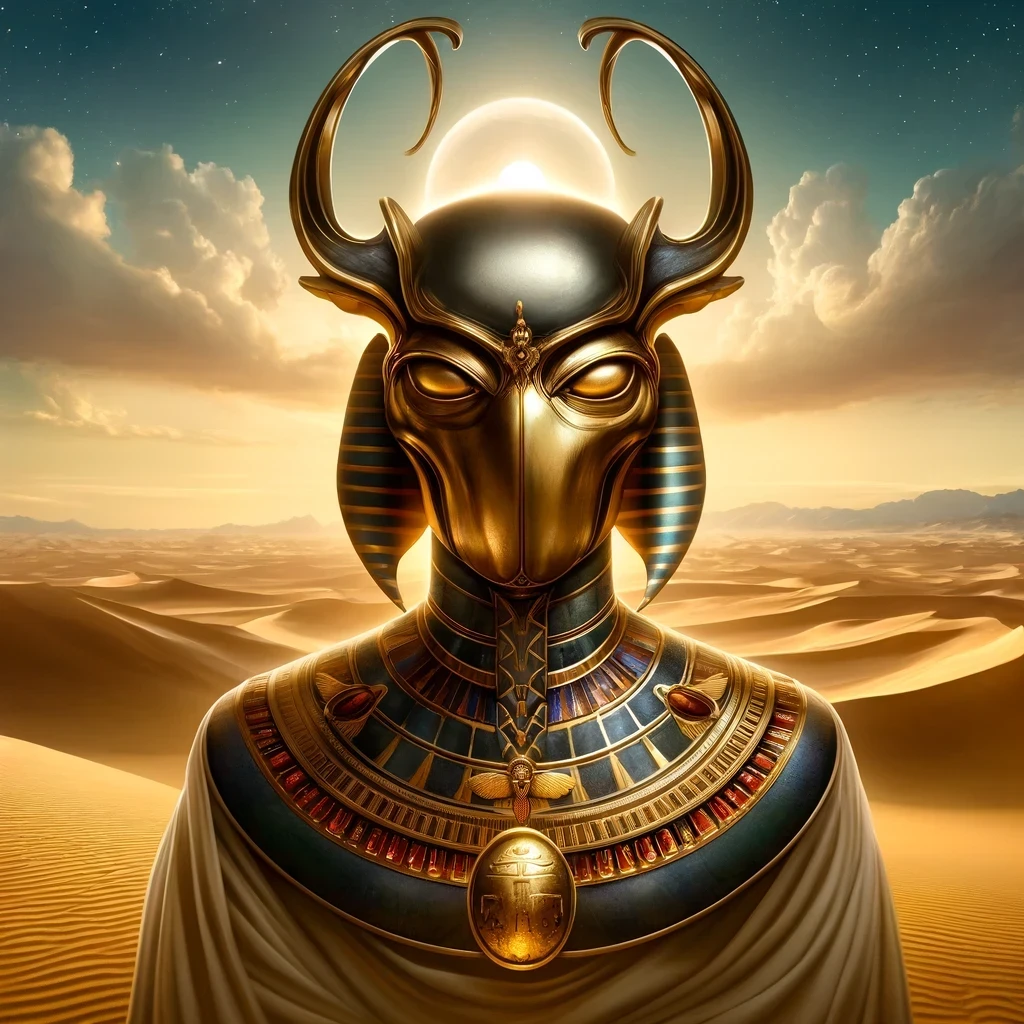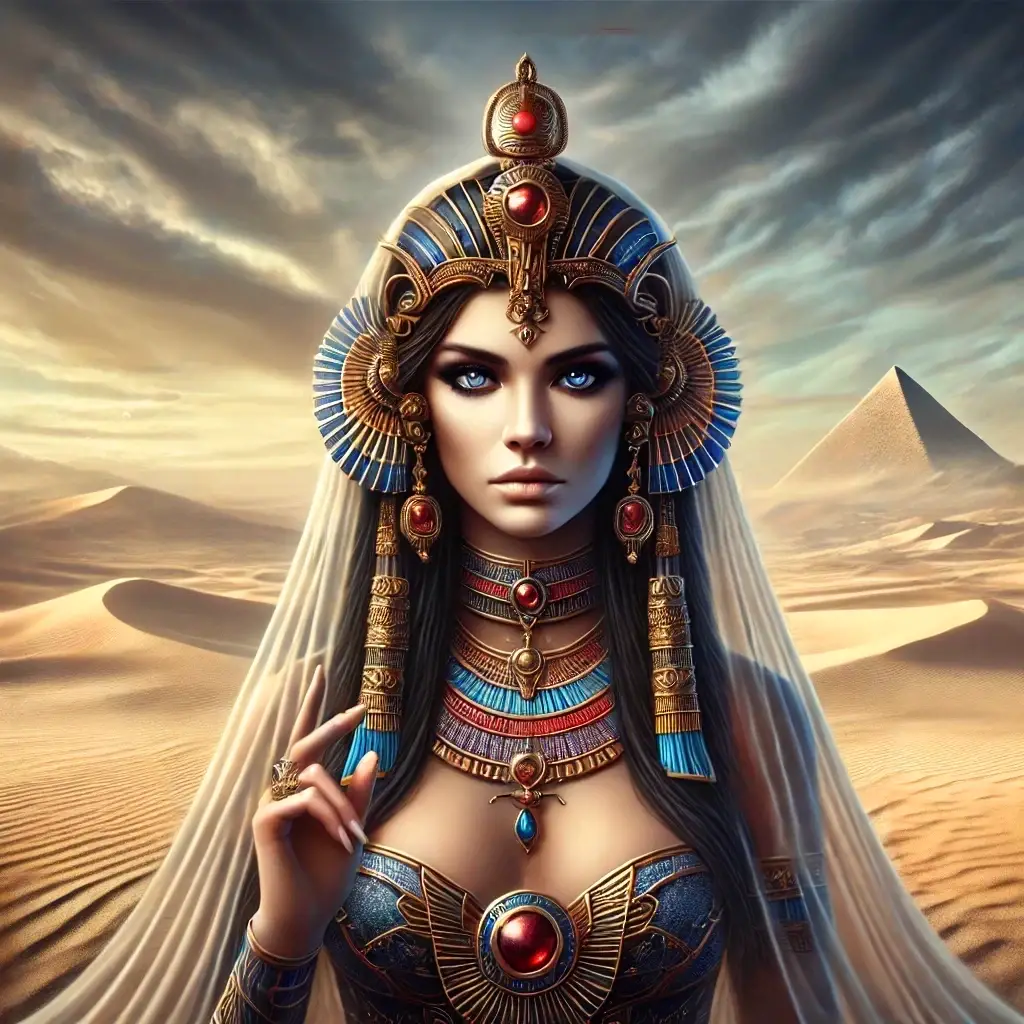Imentet, also known as “Lady of the West,” was an ancient Egyptian goddess revered as a guide to the afterlife. Her name, derived from the Egyptian word “imnt,” meaning “west,” encapsulates her role as the personification of the western horizon, a sacred gateway to the underworld. Known also as “Mistress of Eternity,” this deity was closely associated with protection, eternal rest, and the comforting embrace awaiting the deceased in the afterlife. She often appeared in funerary texts and art, symbolizing a peaceful transition to the afterlife.
Origins
Historical Roots
Imentet’s origins trace back to the Old Kingdom (2686–2181 BCE), where her role as a funerary deity became integral to Egyptian beliefs about death and the afterlife. She was closely tied to the geography of ancient Egypt, particularly the west bank of the Nile, where cemeteries and necropolises were often situated. The western horizon, where the sun set, was seen as a liminal space—a bridge between the mortal world and the divine realms.
Religious Evolution
Initially a lesser-known deity, her prominence grew alongside the development of mortuary practices. By the New Kingdom (1550–1069 BCE), she was incorporated into more elaborate funerary texts like the Pyramid Texts and the Book of the Dead, cementing her role as a vital figure in guiding the souls of the departed.
Appearance
Visual Representations
Imentet is typically depicted as a woman adorned with a hieroglyphic emblem representing the west, which resembles a semicircle atop a vertical line. Her attire is the traditional sheath dress of ancient Egyptian women, often rendered in vibrant colors. She sometimes holds a was-scepter or an ankh, symbols of power and life.
Artistic Variations
In some artworks, she is shown with outstretched arms, welcoming the deceased to the afterlife. The backdrop often features the western mountains or the entrance to a tomb, emphasizing her role as a guardian of the west.
Abilities
Guardian of the Afterlife
Imentet’s primary role was as a guide and protector of souls transitioning from life to death. She greeted the dead at the threshold of the afterlife, offering them sustenance and ensuring they were prepared for their journey.
Bestower of Rebirth
As a figure of rebirth, she worked closely with Osiris and other deities to ensure the deceased’s safe passage and eventual renewal. Her presence was believed to provide comfort and a sense of continuity to the soul.
Intercessor
In addition to her role in the afterlife, she was an intercessor who conveyed the prayers of the living to the divine realm. This role made her an essential figure in funerary rituals and offerings.
Myths
Welcoming the Dead
One of the most significant roles attributed to Imentet is her presence during the funerary rites. Ancient texts describe her standing at the western horizon to greet the souls of the deceased. Her appearance signified the beginning of their journey into the Field of Reeds, the Egyptian paradise.
Connection with Osiris
In many myths, she is closely associated with Osiris. Together, they symbolized the cyclical nature of life and death. While Osiris presided over judgment, she acted as the compassionate guide, ensuring that the deceased felt welcomed and supported.
The Tale of the Western Shore
An obscure myth mentions Imentet’s role in guiding a lost soul through the challenges of the underworld. This tale highlights her nurturing qualities and her dedication to assisting those who might falter on their path.
Symbolism
The Western Horizon
Imentet’s connection to the west symbolized the liminal space between life and death. Her association with the sunset embodied the daily cycle of endings and beginnings, a central theme in Egyptian cosmology.
Objects and Icons
Her emblem, the hieroglyph for the west, became a powerful symbol in tombs and funerary texts. Offerings placed in her name often included bread, beer, and other staples, reflecting her role as a provider.
Animals and Plants
The swallow, often seen as a messenger between worlds, was sacred to her. The sycamore tree, associated with shelter and nourishment, also represented her protective qualities.
Relationships
Osiris
Imentet’s bond with Osiris is central to her mythological role. While Osiris judged the souls of the dead, she welcomed them, acting as a gentle counterpart to his authority.
Anubis
As a deity of the dead, Imentet often worked alongside Anubis. While he prepared the body for burial, she tended to the soul, ensuring its readiness for the afterlife.
Ra
Her connection to the setting sun linked her to Ra. As the sun god journeyed through the underworld each night, she played a supportive role in maintaining cosmic balance.
Trivia
- Imentet’s imagery is often found on the walls of tombs, particularly in the Valley of the Kings.
- She was sometimes conflated with Hathor, another goddess associated with the west and the afterlife.
- In some depictions, she is shown offering a cup of water to the deceased, symbolizing purification.
- Imentet’s name appears frequently in the Coffin Texts and the Book of the Dead.
- Despite her prominence in funerary contexts, she is rarely mentioned in major mythological narratives, highlighting her specialized role.



